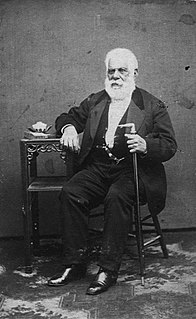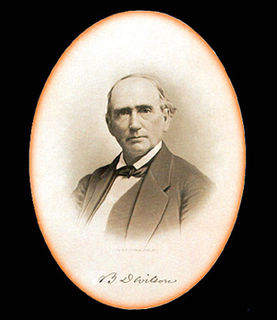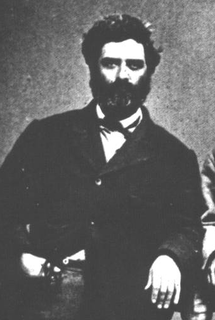Related Research Articles

Don Pío de Jesús Pico was a Californio politician, ranchero, and merchant that served as the last Governor of Alta California under Mexican rule. Pico was one of the wealthiest men in California at the time and also served on the Los Angeles Common Council.

Olvera Street is a historic street in downtown Los Angeles, and a part of El Pueblo de Los Angeles Historic Monument, the area immediately around the 19th-century Los Angeles Plaza, which has been the main square of the city since the early 1820s, when California was still part of Mexico, and was the center of community life until the town expanded in the 1870s. Many of the Plaza District's historic buildings are on Olvera Street, including its oldest one, the Avila Adobe, built in 1818; the Pelanconi House built in 1857; and the Sepulveda House built in 1887.

The Ávila Adobe, built in 1818 by Francisco Ávila, is the oldest standing residence in City of Los Angeles, California. However, the oldest building in the county is the 1795 Gage Mansion in Bell Gardens, currently considered the oldest structure in Los Angeles County. Avila Adobe is located in the paseo of historical Olvera Street, a part of Los Angeles Plaza Historic District, a California State Historic Park. The building itself is registered as California Historical Landmark #145, while the entire historic district is both listed on the National Register of Historic Places and as a Los Angeles Historic-Cultural Monument.

Benjamin Davis Wilson was an American politician. He was known to the Native Americans as Don Benito because of his benevolent manner in his treatment of Native American affairs. Wilson, a native of Tennessee, was a fur trapper and trader before coming to California.

Manuel Requena (1802–1876) was president of the Los Angeles Common Council in the early 1850s. He served the city in both the Mexican and American periods.
Manuel Victoria was governor of the Mexican-ruled territory of Alta California from January 1831 to December 6, 1831. He died in exile. He was appointed governor on March 8, 1830 by Lucas Alamán.

Ygnacio Ramón de Jesus del Valle was a Californio rancher and landowner in the eastern Santa Clara River Valley, California, United States, as well as an alcalde of Los Angeles. His estate, Rancho Camulos, is registered as a National Historic Landmark.
Leonardo Cota (1816–1887) was a Captain with the Californios in the Mexican–American War; and later a Los Angeles County Supervisor.

David W. Alexander was an early California politician and pioneer in Los Angeles County, California. He was on the Board of Supervisors in 1853 and 1854, and in 1855 he was elected the third sheriff for the county.

Abel Stearns was a trader who came to the Pueblo de Los Angeles, Alta California in 1829 and became a major landowner, cattle rancher and one of the area's wealthiest citizens.

Tomas Avila Sanchez (1826–1882), soldier, sheriff and public official, was on the Los Angeles County, California, Board of Supervisors and was a member of the Los Angeles Common Council, the legislative branch of the city.
Rancho Tujunga was a 6,661-acre (26.96 km2) Mexican land grant in the western Crescenta Valley and northeastern San Fernando Valley, in present-day Los Angeles County, California. It was granted in 1840 by Mexican governor Juan Alvarado to Francisco Lopez and Pedro Lopez.
Ygnacio Coronel (1795–1862) was a settler in the Pueblo de Los Ángeles of Mexican Alta California. He was a member of the Los Angeles Common Council.
Santiago Argüello (1791–1862) was a Californio, a soldier in the Spanish army of the Viceroyalty of New Spain in Las Californias, a major Mexican land grant ranchos owner, and part of an influential family in Mexican Alta California and post-statehood California.
Matthew Keller or Mathew Keller (1810–81) was an early agriculturalist, vintner and distiller in Los Angeles, California, shortly after it became part of the United States following the Mexican War. He was also on the county Board of Supervisors and on the Common Council, the city's governing body.
William Taylor Barnes Sanford (1814–1863) was an American road builder, a landowner and the second postmaster of Los Angeles, California, after it became a part of the United States. He was a member of the Los Angeles Common Council in 1853–54.
George Henry Carson (1832–1901) was a merchant, road builder, rancher and member of the Los Angeles, California, Common Council in the 1850s.
Narciso Botello was a chief of staff for Mexican General Joaquín Ramírez y Sesma before the Mexican–American War and was the first Southern California member of the California State Assembly after California organized its legislature.
Henry Hammel and Andrew Henry Denker, known as Andrew H. Denker or A.H. Denker, (1840–1892) were business partners and brothers-in-law in 19th Century Southern California who ran hotels and owned an extensive spread of agricultural property that eventually became the city of Beverly Hills. Both born in Germany, they married sisters born in France. Hammel was a member of the first Kern County, California, Board of Supervisors in 1866-67 and later was on the Los Angeles Common Council, the governing body of that city. Denker was a Kern County supervisor in 1873-74.
John Jones (1800-1876) and Doria Deighton-Jones (1824-1908) were husband-and-wife landowners and developers in 19th- and early 20th-century Los Angeles, California. John Jones was president of the Los Angeles Common Council, the governing body of that city, in 1870–1871.
References
- ↑ "Supervisor Agustin Olvera" (PDF). Archived from the original (PDF) on 2011-07-21. Retrieved 2009-06-22.
- ↑ Chronological Record of Los Angeles City Officials,1850–1938, compiled under direction of Municipal Reference Library, City Hall, Los Angeles (March 1938, reprinted 1966). "Prepared ... as a report on Project No. SA 3123-5703-6077-8121-9900 conducted under the auspices of the Works Progress Administration."
- ↑ Edward Robbins, Rodolphe El-Khoury (2004). Shaping the City: Studies in History, Theory and Urban Design. Routledge. p. 132. ISBN 0-415-26188-0.